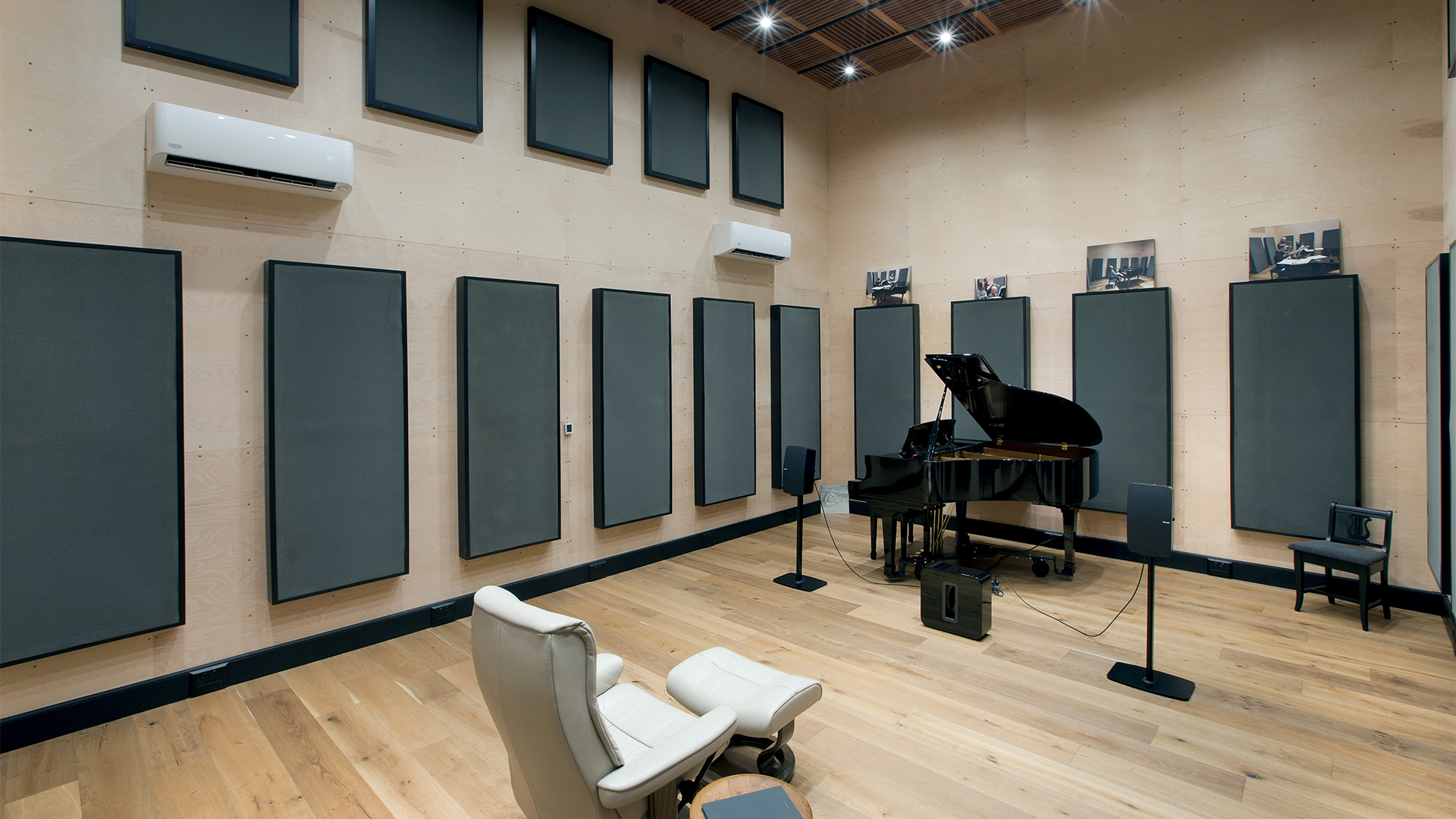
A free standing panel can have many meanings. A free standing panel could be a sound diffusion or a sound absorbing panel. The panel type is defined by its function. Is it designed to absorb excess room energy to improve speech intelligibility or is it designed to diffuse that room energy so the room sounds larger. This is part of psychoacoustics. A free standing panel means that the panel will stand on its own and support itself. A common term for a free standing panel is gobo.
The requirement of a freestanding panel to stand on its own would be only for low frequency absorbers which are by definition much thicker or deeper which provides more surface area to support the free standing panel. Let’s look at the energy within our rooms so we can better understand why we would need to consider a free standing panel.

Wave & Ray Energy
We have two types of sound energy issues within our rooms. We have lower frequency energy in the bass that will not fit into our room dimensions. We have other ray energy that reflects off of our room walls, floor, and ceiling. These two forms of energy ,wave and ray, produce all the distortions that occur within any small room. Lower frequency waves are 30 – 40′ long. They do not fit in any room size.
When the dimensions of the room are too small to let the wavelength run its complete distance, phase results. Phase or room modes are another form of room distortion. Room modes can exaggerate or attenuate complete octave bands in response. Ray energy is straight line energy that is smaller in length. Ray energy produces reflections from the room boundary surfaces. Reflections produce reverberation which confuses speech intelligibility. Speech Intelligibility is how many words you can clearly hear in a ten word sentence.

Panels Designed For Music & Voice
Whether a panel is wall hanging or a free standing panel, you must first decide whether you are going to need absorption or diffusion treatment. If it is absorption that is required, you will then need to decide if it is low, middle, or high frequencies that must be treated. You must use the appropriate technology and have enough square footage of coverage on the required wall surface areas. You must also choose a technology that was specifically designed for music and voice. Music and voice are very special to humans. We can detect subtle tonal changes in voice that can totally change the context of the spoken word.
Music is just as important as another form of communication where slight tonal changes and differences can reach inside of our bodys and touch our hearts. You must use a treatment technology whether it is absorption or diffusion that if absorption exhibits the proper rates and levels of absorption. If diffusion, the prime number chosen must respect distance from the diffuser to the listeners ears and usage of the room.

Diaphragmatic Absorber For Low Frequency Energy
Free standing panels are usually regulated to lower frequency absorption. Low frequency, sound absorbing, free standing panels are between 12″ – 16″ deep. They are heavy since low frequency sound absorption technologies require mass to mitigate the wave pressure from longer, lower frequencies. The most powerful of all the low frequency sound absorption is called diaphragmatic. At Acoustic Fields, we use diaphragmatic absorption. It is the most powerful of all the current low frequency technologies.
Inside our diaphragmatic absorbers is our carbon technology. The cabinet depth determines how low the unit will absorb at. The carbon fill material increases the rate of absorption. Our ACDA series has two frequency ranges of absorption. The ACDA-10 begins at 30 hz. and goes strong through 300 hz. We add our foam to the face of each unit behind the fabric. The ACDA-12 starts at 30 hz. and goes through 50 hz. It is our most powerful absorber. Our foam face extends the rate of absorption through 6,300 hz. Most rooms take a combination of both frequency ranges.

Proper Rate & Level of Absorption
With any form of room treatment, you must look at the music and voice usage within the room. You must assign the proper absorption or diffusion technology to treat the issues presented by music and voice frequencies. Once you have decided what treatment type to use, you must then decide on how much treatment and how much surface area you will treat.
For low frequency absorption, it is all about the proper rate and level of absorption to manage the lower frequencies and enough surface area coverage to have the appropriate frequency response changes. Low frequency management is usually required on all four walls as a minimum. Depending on room size and usage, you may even have to treat either the floor or ceiling or in some cases both surfaces.







